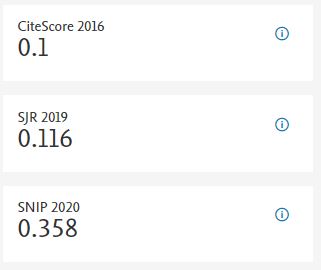A STUDY OF GLOBAL VALUE CHAINS IN FOREIGN DIRECT INVESTMENT IN INDIAN ECONOMY
Keywords:
Foreign Direct Investment, India, economic development, foreign companies, Indian businessesAbstract
Foreign direct investment (FDI) in India is a major monetary source for economic development in India. In 2019, worldwide FDI flows 1 grew 12 percent to USD 1,426 billion compared to 2018. However, flows remained extremely low in 2019, which accounted for only 1.6 percent of GDP from 2015 to 2017 compared with more than 2 percent since the 2018 FDI reform was very low. FDI flows were lower in 2018 and 2019, as flows fell in the aftermath of the 2008 global financial crisis, than they did at any time since 2010. This newsletter focuses mainly on FDI status in 2019 before many economies began to suffer from the COVID-19 virus. Section 4 and a separate notice on COVID-19 impact on FDI flows provide further information on current FDI flows and projections by the end of2021.Foreign companies directly invest in rapidly expanding Indian private enterprises to benefit India from cheaper salaries and changing business environments. Economic freedom started in India, and since then, in India, FDI has steadily grown, creating over one crore (10 million) in jobs in the future. On 17 April 2020, the Department of Promotion of Industry and Internal Trade announced that India had revised its strategy for FDI to shield Indian companies from "opportunistic takeovers of Indian companies by virtue of the new COVID-19 pandemic." Although the new FDI Policy does not restrict markets, the Policy ensures that the Ministry of Commerce and Industry now scrutinizes all FDIs.
References
Borga, M.,P. IbarluceaFloresandM. Sztajerowska (2020), "Drivers of divestment decisions of multinational enterprises -A cross-country firm-level perspective", OECD Working Papers on International Investment, No. 2019/03,
Cadestin, C., et al. (2018), "Multinational enterprises and global value chains: New Insights on the trade-investment nexus", OECD Science, Technology and Industry Working Papers, No. 2018/05, OECD Publishing, Paris, https://doi.org/10.1787/194ddb63-en.
Celik, S., G. Dimertas, and M. Isaksson (2020), Corporate Bond Market Trends, Emerging Risks, and Monetary Policy,OECD Capital Market Series, Paris, https://www.oecd.org/corporate/corporate-bond-market-trends-emerging-risks-and-monetary-policy.htm.
Cohen, M. A. and H. L. Lee (2020), “Designing the Right Global Supply Chain Network”, Manufacturing & Service Operations Management, Vol. 22, No. 1
CNBC (2020), “GM offers manufacturing blueprints for face masks to 600 auto parts suppliers amid virus pandemic”
De Backer, K. and D. Flaig (2017), "The future of global value chains: Business as usual or “a new normal”?", OECD Science, Technology and Industry Policy Papers, No. 41, OECD Publishing
Ernst & Young (2019), Global Corporate Divestment Survey, www.ey.com/en_gl/divestment-study
Forbes (2020), “General Motors Embraces Supply Chain Resiliency”, www.forbes.com/sites/stevebanker/2016/05/31/general-motors-embraces-supply-chain-resiliency/#38d054b13684
Fortune (2020), “Europe’s auto factories are closing. Experts fear a lost decade is coming”, www.fortune.com/2020/03/17/coronavirus-impact-shutdown-european-auto-sector-volkswagen
Javorcik, B. S. and S. Poelhekke (2017), "Former Foreign Affiliates: Cast Out and Outperformed?", Journal of the European Economic Association, Vol 15, Issue 3, 501–539.
Kose, A., N. Sugawara and M. E. Terrones (2020), "Global Recessions,"Policy Research Working Paper Series 9172, World Bank.
McKinsey (2020), Scenarios for the Economic Impact of the COVID 19 Crisis.
OECD (2018), Multinational enterprises in the global economy: Heavily debated but hardly measured. Policy Note
Alfaro, L. (2019). “Gains from Foreign Direct Investment: Macro and Micro Approaches.” The World Bank Economic Review, 30 (Supplement 1): S2–S15.
Alfaro, L., S. Kalemli -Ozcan and S. Sayek (2019). “Foreign Direct Investment, Pro -ductivity and Financial Development: An Empirical Analysis of Complementarities and Channels”. The World Economy32, 111–135
Dunning, Lundan (2018), Multinational Enterprises, 2nd Edition, Edward Elgar Publishing Limited, Pp. 2 -8.
Narayana (2019), Foreign Investment and Indian Economy (Ed), Manglam Publishers & Distributors, Delhi, Pp. 26 - 27.
Singh, Gupta (2019), "Foreign Direct Investment and Industrial Development in India", Thesis submitted to MaharshiDayanand University Rohtak for the degree of doctor of philosophy in Department of Commerce.
LakshmanaRao, Ravikanth (2019), Make in India and Foreign Direct Investment (FDI) - synergetic effect on Economic Growth, SSRN Journal, Pp. 1-8.
Agarwal J., Khan M.A (2019)., "Impact of FDI on GDP: A comparative study of China and India", International Journal of Business Management, Vol. 6, Issue - 10, 2011, pp. 71-79.
Sharma, Khurana (2019), Role of FDI in Various Sectors, International Journal of Advances in Management and Economics, Vol. 4, Issue - 3, 2013, Pp. 12 - 14.
MahendraSinha, Arindam, Partha (2018), Foreign Direct Investment and Indian Industries: A Dynamic Panel Study, International Journal of Pure and Applied Mathematics, Volume 118 Issue. 18, 2018,ISSN: 1279-1294, Pp. 1279 - 81.
Prasad, et. al (2017), Foreign Direct Investments and the Legal Profession in India , Delhi Business Review X Vol. 8, No.1, JanuaryJune.
Aditya Bajaj KR, Swastik N (2017) Globalization in the Indian Pharmaceutical Industry- FDI spillovers and implications on Domestic Productivity: 1991-2007. The Research Project, IIM Ahmadabad.
Narula R, Lall S (2016) Understanding FDI-Assisted Economic Development.Rutledge, London, New York.














